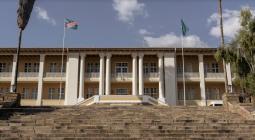Up-to-2.5GW green hydrogen hub in Australia ‘to begin construction early next year’ after $45m federal grant

In a pre-recorded speech shown to delegates at the Asia-Pacific Hydrogen Summit in Sydney, federal climate change and energy minister Chris Bowen said that construction on the first phase would now begin on the Central Queensland Hydrogen Hub (CQ-H2) “early next year”.
Bowen said that the hub will produce 36,000 tonnes of green hydrogen annually by 2027, and 292,000 tonnes by 2031 for export.
“This is the equivalent of fuelling more than double Australia’s heavy-vehicle fleet,” he said.
The project is being led by Queensland’s government-owned power company Stanwell, and co-developed by Japanese companies Iwatani Corporation, Kansai Electric Power Company, Marubeni, and Singapore headquartered Keppel Infrastructure.
A fact sheet on the Stanwell website states that the full project will use “up to 2500MW” of electrolysers, with the initial phase to start commercial operation in 2028, with the remainder coming on line in 2031.
And in a presentation to the summit, Stanwell’s general manager for hydrogen projects, Phil Richardson, said that a final investment decision on the initial phase will not be taken until late 2024, suggesting the minister might have been overly optimistic.
The project is due to include solar-powered electrolysers, a hydrogen pipeline to the Port of Gladstone, the supply of H2 for ammonia manufacturing, and a “hydrogen liquefaction facility and ship loading facilities” at the port. Large industrial consumers in Queensland will also receive green hydrogen.
A front-end engineering and design (FEED) study on CQ-H2 began in May.
“Thanks to Queensland’s combination of abundant natural resources and clear policy framework supporting green hydrogen, it’s estimated the industry will be worth $33bn by 2040, boosting our economy, supporting jobs, and helping decarbonise the world,” said Mick de Brenni, energy, renewables and hydrogen minister in Queensland.
As part of the same Regional Hydrogen Hubs programme, the Australian government has already pledged A$70m to the Townsville Hydrogen Hub in northern Queensland; A$48m to the Hunter Valley Hydrogen Hub in New South Wales; A$70m to both the Pilbara and Kwinana hubs in Western Australia; A$70m to the Port Bonython Hydrogen Hub in South Australia (which also received an additional A$30m from the state government); and A$70m for the Tasmanian Green Hydrogen Hub at Bell Bay.
“Australia’s hydrogen industry is projected to generate A$50bn in additional GDP by 2050, creating tens of thousands of jobs in regional Australia as Australia transforms to a renewable energy superpower,” said a federal government press release.(Copyright)






